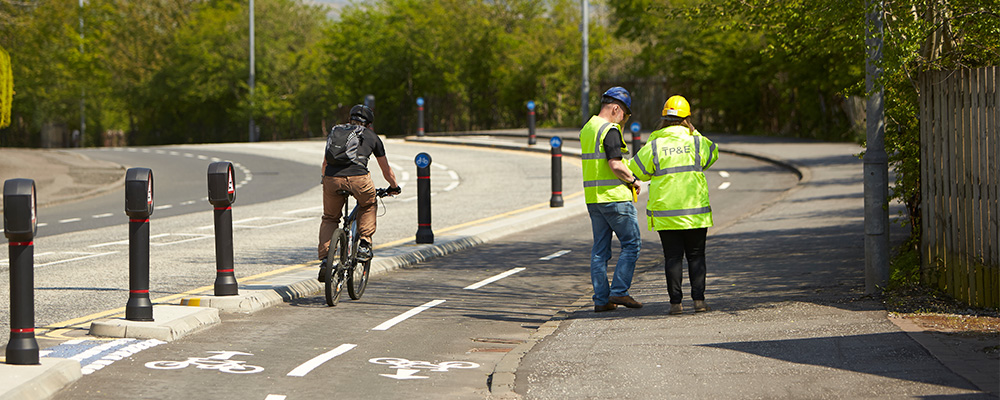 Along with seven partner organisations (Cycling UK, Forth Environment Link, Living Streets, Paths for All, Ramblers Scotland, Sustrans Scotland and Transform Scotland), we jointly supported the following priorities for Scotland’s National Transport Strategy:
Along with seven partner organisations (Cycling UK, Forth Environment Link, Living Streets, Paths for All, Ramblers Scotland, Sustrans Scotland and Transform Scotland), we jointly supported the following priorities for Scotland’s National Transport Strategy:
- Give more space to cycling and walking
- End new road building and prioritise active and sustainable travel
- Deliver affordable and integrated public transport
- Planning for better land use
- Support for behaviour change
- Improve access to bikes
Our joint response highlighted how a focus on walking and cycling, along with affordable and accessible public transport, is best placed to deliver on Scotland’s priorities. This should be mirrored by an end to spending and investment in the creation of new trunk roads to help make sure that journeys on foot, by bike and by public transport are prioritised before cars.
Read the full response here.
We also submitted an individual consultation response where we called for a range of measures/actions for Scotland’s transport sector/national policy. Focusing on these actions will help tackle inequality, reduce carbon emissions and improve health and wellbeing.
In our consultation response, we outlined the following actions which could be taken to achieve these objectives:
- Focused policies to deliver the Sustainable Transport Hierarchy
- Promotion of active travel as default option for short, everyday journeys
- Safe, segregated, easy to access cycling infrastructure (and active travel routes)
- Greater emphasis on behaviour change towards active travel
- Improve accessibility and reduce inequality in terms of access and outcomes experienced from the transport system
- Road maintenance (spending) decisions on local roads take account of and prioritise the needs of vulnerable road users
- Set a trajectory to end trunk road construction and invest 10% of the transport budget (over £30 per person per year) on active travel
- Increased cycle storage on public transport (trains and buses) to support modal integration
- Traffic calming measures, particularly in known hotspots, through targeted reduction of speed limits, including 20mph zones
- Focus on promoting multi-modal journeys to deliver truly sustainable end-to-end journeys
- Scottish Planning Policy to become statutory with increased focus on planning decisions to ensure walking and cycling are realistic for all new housing, commercial and retail developments
- Managing freight and HGV access to town centres, including through last-mile deliveries, to increase safety for vulnerable road users.
Across all these actions, it is essential that the National Transport Strategy makes explicit reference to and linkage with other strategies and action plans including a revised Cycling Action Plan for Scotland, National Walking Strategy, Long-term Vision for Active Travel, Active Scotland Outcomes Framework, and the newly published Active Travel Framework to ensure policy coherence and emphasis on active travel in all (relevant) policy areas and decisions. Addressing the climate emergency is one of the biggest challenges we face and cycling and active travel must be central in our response to it.
Read our full consultation response here.
The Strategic Transport Projects Review (STPR) is also currently being refreshed and updated. Our response to this is shaped by the Cycling Action Plan for Scotland (CAPS) Progress Report, published in 2016, and the International Comparator Study which laid out how progress can and should be made on getting more people cycling.